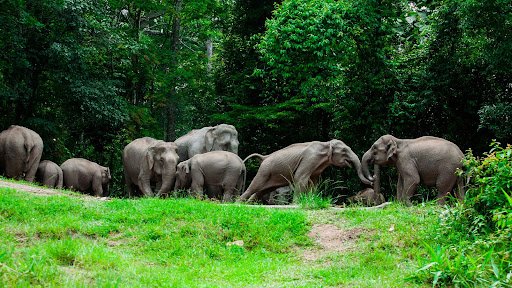Exploitation or Conservation? Animal Tourism in Southeast Asia
AUTHOR: ZARA FAROOK
Southeast Asia - a region known for its rich culture and beautiful nature, boasts one of the largest tourism industries in the world. Millions of tourists from across the globe travel to Southeast Asia every year, riding elephants in Thailand, watching bear dances in Laos, and indulging in the region's most famous animal attractions. However, behind the appealing façade, lies the often overlooked unethical treatment of wildlife in the tourism industry.
In Thailand, tourist targeted businesses will allow customers to ride, interact with, and feed Asian elephants - the national animal of the country. Although many businesses will claim to have rescued these animals, the methods necessary to ride an elephant's back and keep them captive are physically abusive and require the dangerous process of phajaan.
Phajaan, translated from Thai to “elephant crushing”, starts from the birth of an elephant. They are torn away from their mothers, and placed into confined spaces in which they are starved and physically abused into submission. Many of these animals live their lives in complete isolation and are only able to receive food, water, and rest once they submit to their masters and allow humans to ride on their backs. Interacting with and experiencing an elephant ride may be one of Thailand’s most famous tourist attractions, but it is also one of the most inhumane.
An elephant ride at one of Thailand’s tourist-centric “elephant sanctuaries”. Photo from Animals Asia.
In recent years, however, there has been a turn for the better through the development of Thailand’s Cruelty Prevention and Welfare of Animals Act. Established in 2014 by the Thai Parliament’s Department of Livestock Development (DLD), the act details guidelines and regulations to improve welfare standards for specific animals in the region. During the COVID-19 pandemic, Thailand's tourism industry took a large dip, which significantly slowed elephant sanctuaries’ income, creating an even worse environment for the animals than before. This deterioration caught the attention of the DLD, which in turn created a call to re-evaluate and actively enforce the Cruelty Prevention Act. The Thai DLD relocated many of the ill-treated elephants, spot-checked many elephant sanctuary businesses, and is now enforcing penalties of up to 2 years in prison or a 40,000 baht fine for offenders.
A herd of elephants in their natural habitat inside the Khao Yai National Park. Photo from Thai National Parks
The animal tourism industry has slowly been working towards a more ethical approach. With a large increase in regulated and licensed animal sanctuaries, the industry is seeing a 8% annual increase in revenue of its ethical wildlife tourism industry. The animal tourism industry would ideally comprise an environment where tourists are able to learn about and experience the animals of Southeast Asia while simultaneously preserving the animals right to ethical treatment and as much of their natural environment as possible. These principles are well embodied by The Khao Yai National Park in Thailand, and Taman Negara National Park in Malaysia. These two national parks, along with other initiatives, laws, and businesses, can lead Southeast Asia’s tourism industry to a more ethical and educational path. By recognizing the pattern of unethical practices in Southeast Asia’s tourism industry, as well as the measures that are being taken to improve it, we can support and encourage ethical animal welfare practices in the region's tourism industry.


